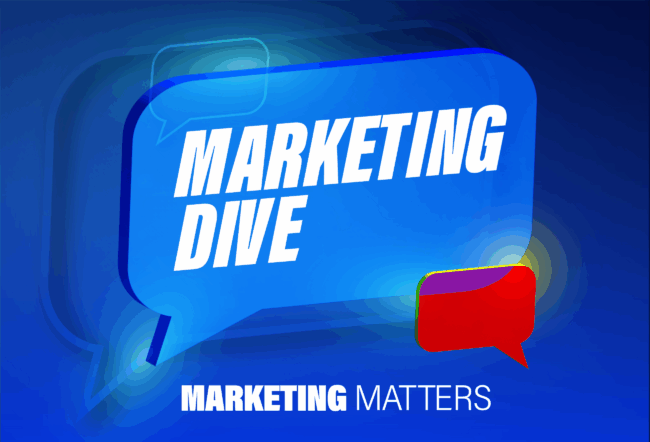Advertisements for branded, patented pharmaceutical drugs often have effects that go beyond providing information to patients. The ads are also about “business-stealing,” i.e. convincing consumers to buy one firm’s drug over that of a rival. In a positive spillover, the ads also encourage patients to visit their doctors to check on different medical conditions, but potentially drive them to cheaper, generic equivalents of the branded drugs that are advertised.
Those are the findings of a recent research study conducted by Wharton’s Michael Sinkinson, a professor of business economics and public policy and Amanda Starc, a professor of health care management. Their research paper, titled “Ask Your Doctor? Direct-to-Consumer Advertising of Pharmaceuticals,” is unique in separating the business-stealing effect from the informational effect of the ads.
Sinkinson recently discussed the research with Knowledge at Wharton. An edited transcript of the conversation appears below.
A Unique Setting
In this paper, we’re looking at the effect of direct consumer advertising of prescription drugs. Americans are constantly surrounded by advertising in their daily lives and as economists, we often think of advertising having one of two effects. You can think of an informational effect, letting consumers know that a certain product exists, or you could think of more of a business-stealing effect, [which is] convincing you to buy the good from Firm B instead of Firm A.
In the economics of prescription drugs, it’s a unique setting. The United States has allowed firms to advertise drugs to consumers since 1997. To date, most developed countries don’t allow firms to advertise pharmaceuticals to consumers. If you were a regulator, you [would ask], “Are drug ads informing patients about potential treatments for their condition or is it just about getting people to buy from one firm instead of the other?”
In this research, we look at the category of drugs called statins. Statins are anti-cholesterol drugs such as, say, Crestor or Lipitor. These are a big category of drugs, both in terms of how people take them and how [companies] advertise. In an ideal world, we’d like to be able to run an experiment [where we] show ads to some people but not to others and see what happens. That is hard to do in the real world.
“If you were a regulator, you [would ask], “Are drug ads informing patients about potential treatments for their condition or is it just about getting you to buy from one firm instead of the other?”
A Natural Experiment:
What we do instead is we exploit the fact that the political process in the United States messes up local advertising markets. For example, we use the fact that in the weeks leading up to the Iowa caucuses and the New Hampshire primary, tens of thousands of political ads pour into those media markets and those political ads displace drug ads. People in those markets don’t see drug ads that month and of course, after those contests are over, the political ads pour into South Carolina, Florida and Nevada and so on. That gives us a natural experiment we can use to see what happens when people in certain markets don’t see drug ads while people in other markets do.
Boosting Generics
We have two main findings. The first is that among the on-patent, branded and advertised drugs, these ads are big on business-stealing. They are about convincing consumers to buy from one firm versus another. That is pronounced among these firms. [The second finding relates to] drugs that are off-patent but in the same category, [such as] a generic statin, [where the firms] typically don’t advertise and they are [sold] at a much lower price [than on-patent drugs]. It turns out that those [generic] drugs benefit from those same ads that are produced for the on-patent branded drugs.
That says [that when] people talk to their doctor about a condition, some of them tend to walk away with a prescription for a lower-priced, off-patent substitute drug instead of the one that was advertised.
Key Takeaways
For regulators, [this is] a big takeaway. You’re concerned as a regulator that if these are just business-stealing ads, the result could be that drug advertising results in higher drug prices or even over-medicated patients. None of those would be a good outcome.
However, one of the nice takeaways is, there is a positive effect. There is a nice spillover to those other, less expensive, non-advertised drugs and [that is] a positive effect of advertising. [Another positive effect of such advertising is] people are talking to their doctors about their health concerns.
“If these are just business-stealing ads, the result could be that drug advertising results in higher drug prices or even over-medicated patients.”
[For pharmaceutical] firms, the takeaway is different if you advertise [your drug] and it has this business-stealing effect. It is easy to get sucked into an advertising war where if you advertise a lot, maybe then I [as a competitor] have to advertise as well and we’re both spending a lot of money and not getting as much out of it as we would like.
Covering New Ground
I think previous research had looked at this question of “What’s the effect of drug advertising?” Some papers have shown, for example, that drug ads do have a spillover effect and that [finding] wasn’t particularly surprising. However, finding the rivalry effects [and] the business-stealing among firms was more surprising.
The popular press had some quotes from executives from some of these firms questioning the value of this advertising. They said it’s a very expensive thing to do and they weren’t sure they were getting much out of it. They wondered if it was just them fighting over a small pool of consumers. That has not been shown in research before and our approach here was fairly novel [and] it let us get at that question for the first time.
Questions for Regulators
If you’re a regulator, you like the positive spillover effect of this and that’s going to go away when there are no more patented drugs in the category. So when the last statin is to go off-patent, it’s unlikely we’ll see any more statin ads on TV and we might have fewer people talking to their doctors about their cholesterol and fewer people taking these drugs that are — generally speaking — very cost-effective.
That said, this category has plenty of breakthroughs on the horizon, so [it is not] an imminent concern. However, this general finding applies to many other medical categories as well and it asks the questions: “Does the FDA need to be telling consumers to go talk to their doctor about their health concerns? Does there need to be some other body doing this advertising if firms stop advertising when they lose the benefits of patent coverage?”
People are used to seeing many drug ads on TV and they may have noticed over time that the drugs seem to be targeting odder [and] more obscure conditions. [Therefore], it’s just good to remind everyone that these are useful ads through the informational effect. It’s good to have patients talking to their doctors about their conditions. Even though we might think there are too many drug ads on TV, they serve a useful purpose for patients.
“[Pharmaceutical executives] wondered if it was just them fighting over a small pool of consumers.”
What’s Next
We’re unique in that we’re able to get at this business-stealing effect separately from just the informational effect. Being able to tease apart the two forces was big. We have this clever, natural experiment to get at this question and we think we’re the first to make this point very clear. It’s going to have big implications for both firms and regulators going forward.
This [research project] was about the effect of ads on consumers. The follow-up we’re working on is trying to get inside the heads of the advertisers and figure out how they respond to market conditions, rival actions and patent expiration when thinking about their advertising decisions.



